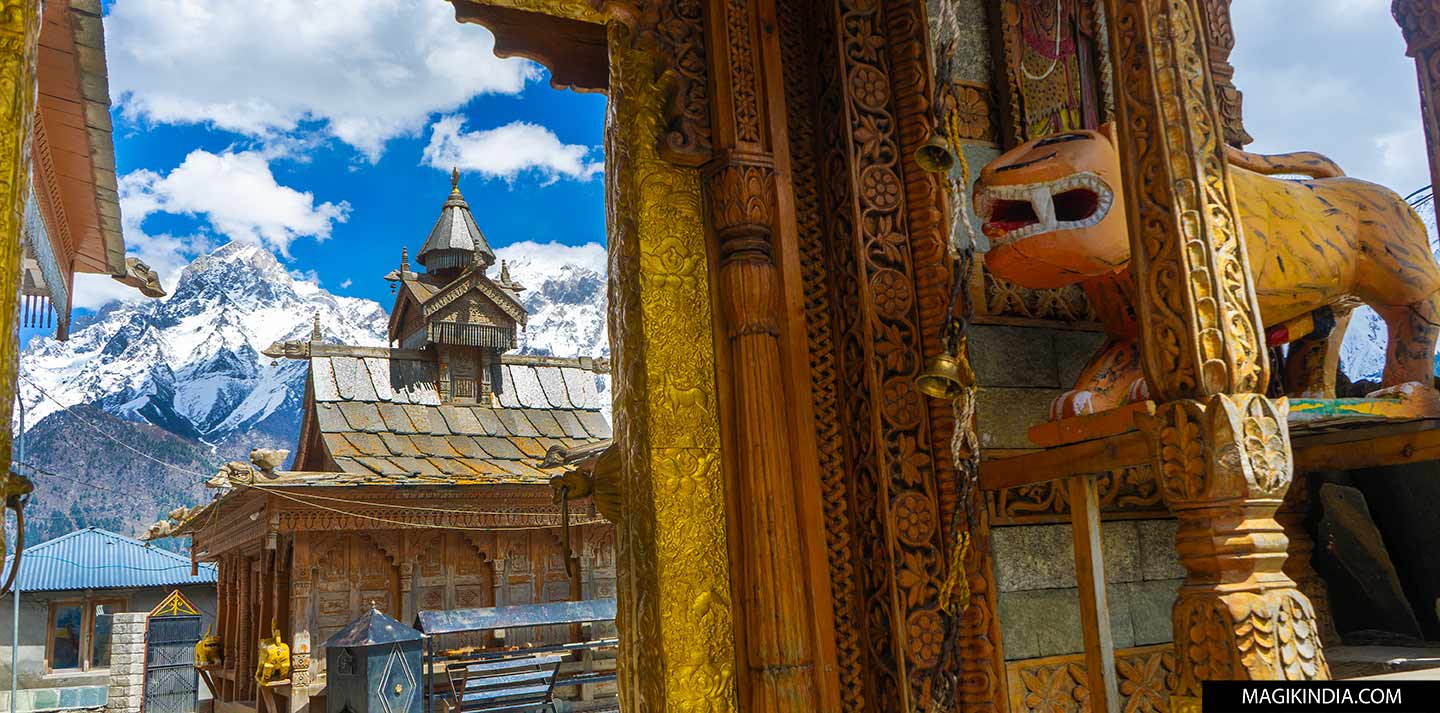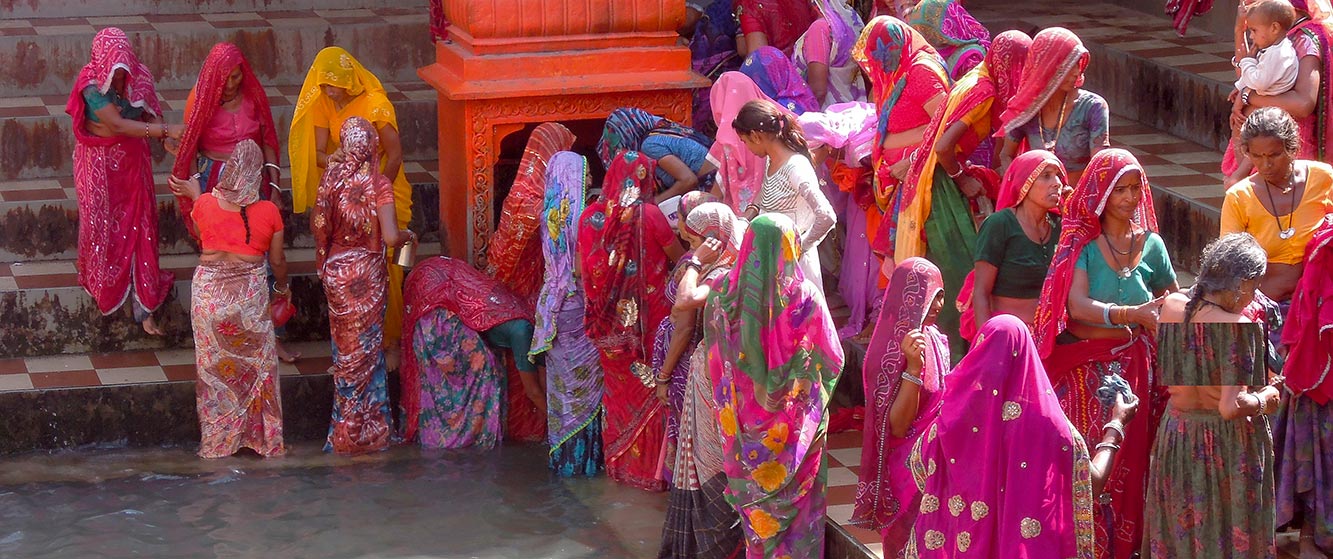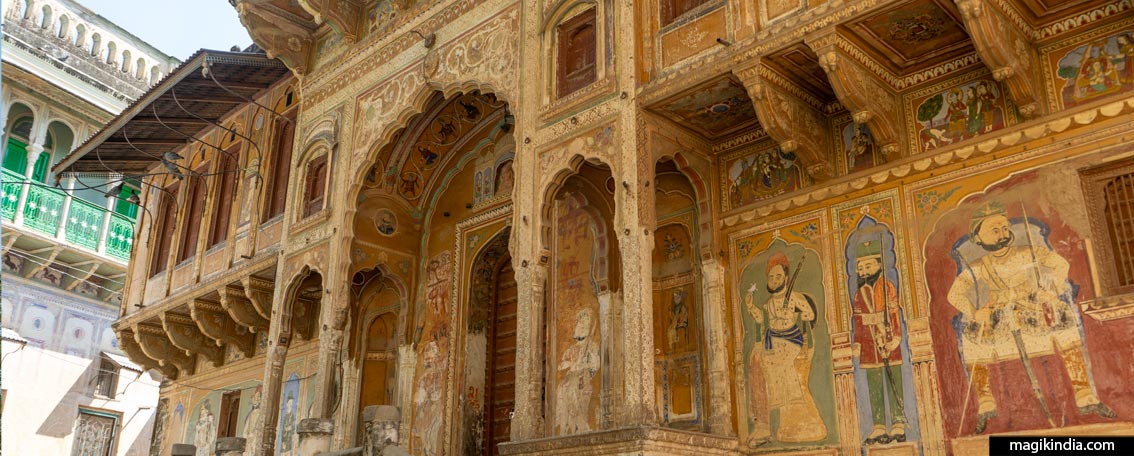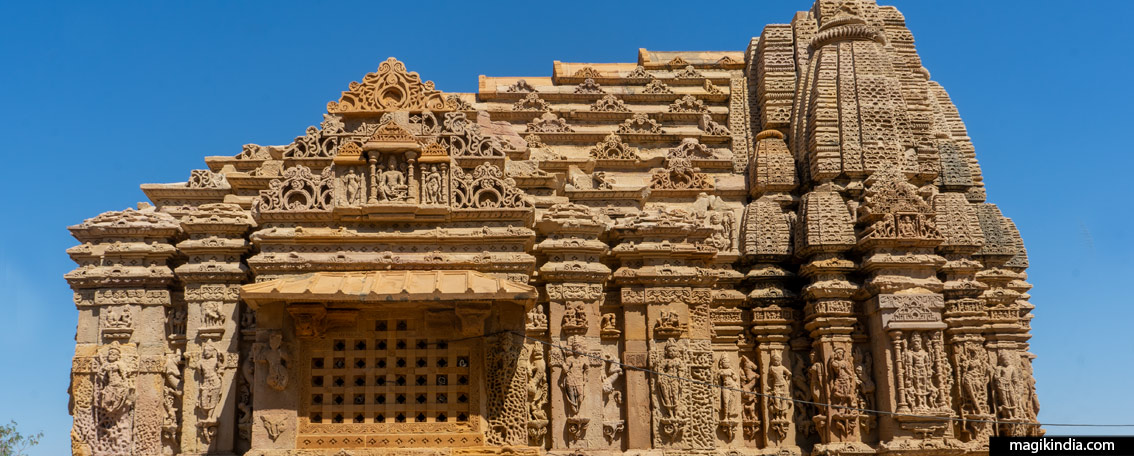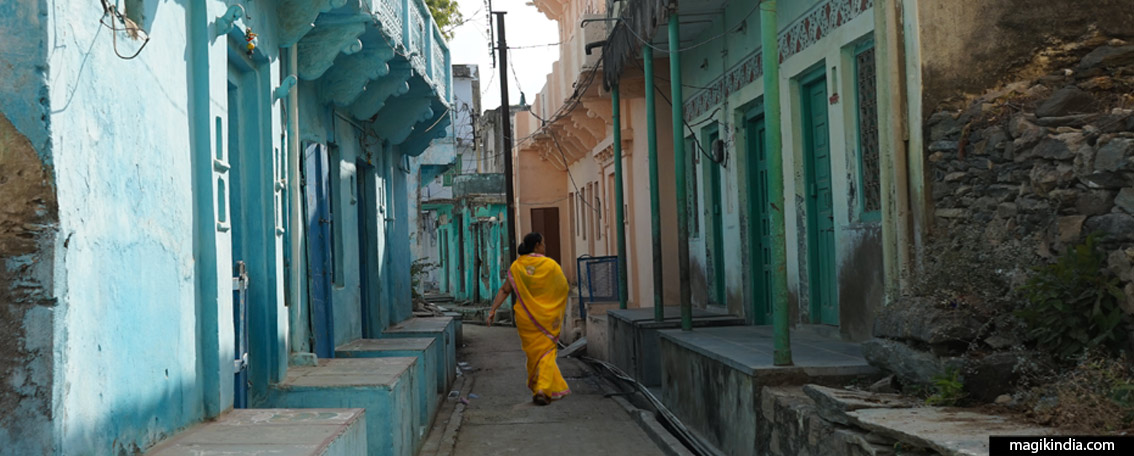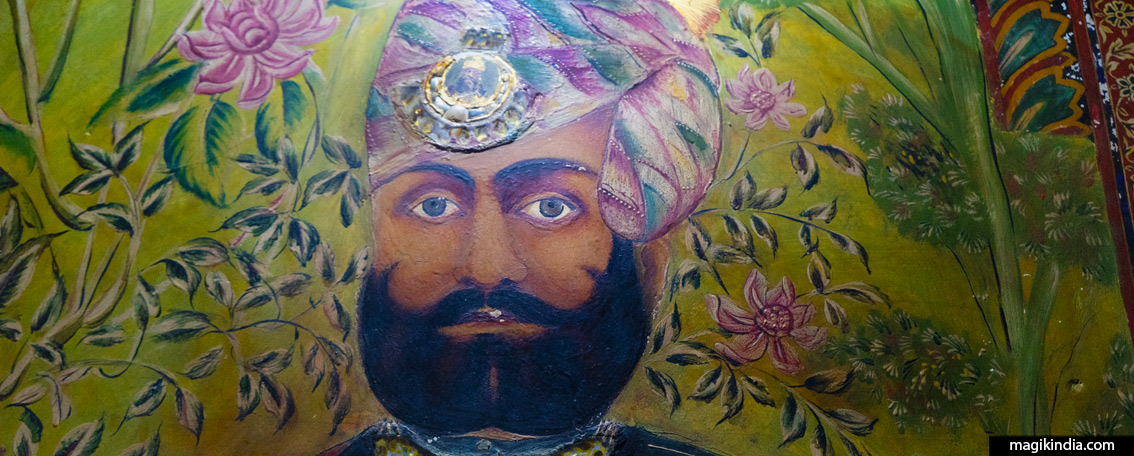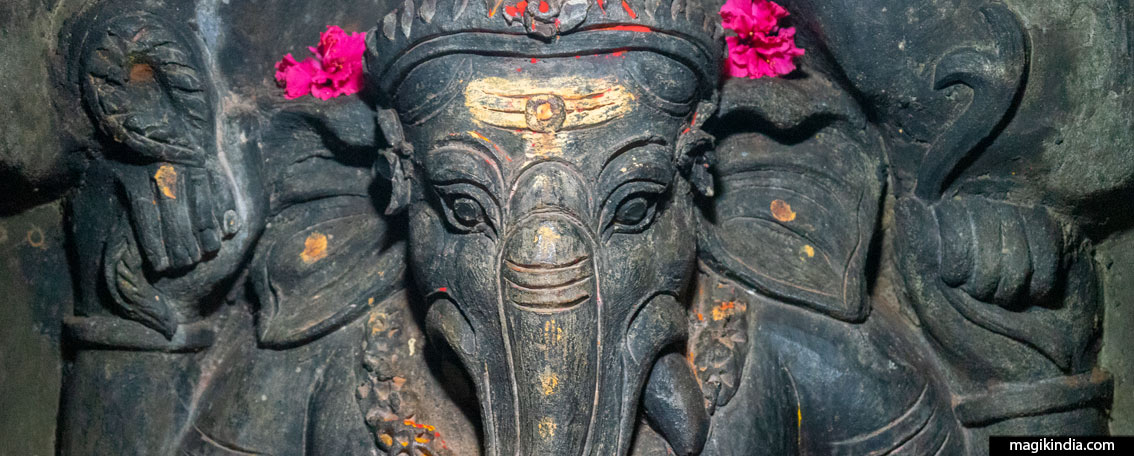
Undavalli, the rock gem of Andhra Pradesh
The Undavalli Caves located 10 km from Vijayawada (Andhra Pradesh), are one of the best examples of rock art in India, which flourished from 322 BCE to the 15th century CE all over the Indian subcontinent. First inhabited by Buddhist and Jain monks, the Undavalli caves were later enriched, under the reign of the Vishnukundin rulers, with delicate Hindu images.
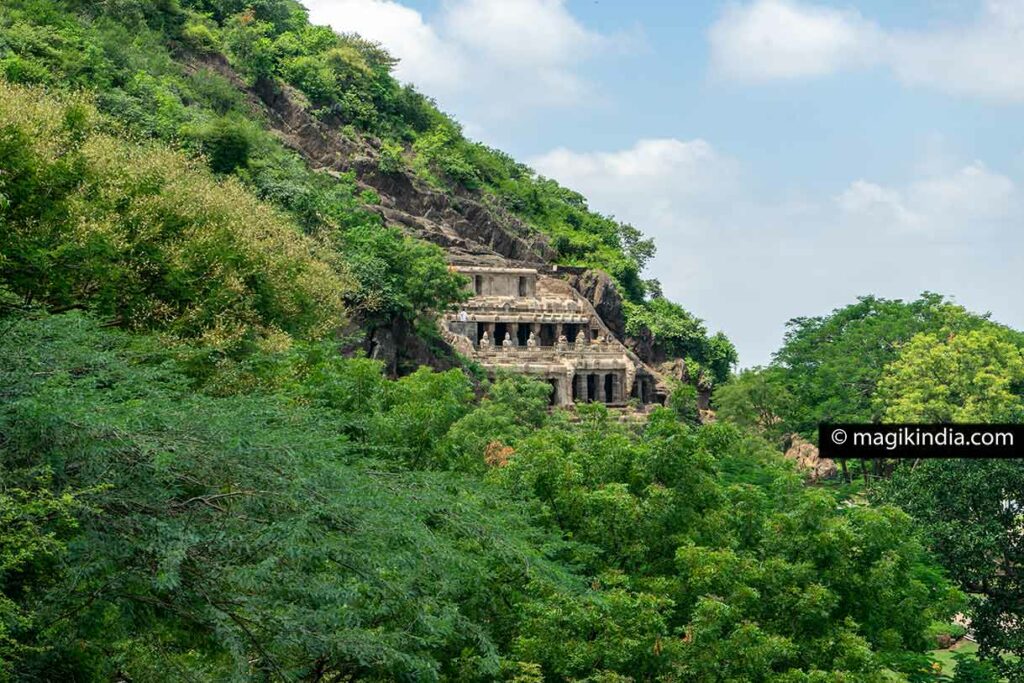
India’s rock-cut architecture, the most developed in the world (more than 1500 sites), appeared around 322–185 BCE with the Barabar Caves in the state of Bihar followed, without being exhaustive, from Udayagiri & Khandagiri in Odisha, from Pavleni, Ajanta and Ellora in Maharasthra, from Badami in Karnataka and from Mahabalipuram in Tamil Nadu. The Jain cave-temples of Gwalior (Madhya Pradesh) and the Ankai caves (Maharashtra) will mark the last phase of this art, from the 7th to the 15th century CE.
*rock-cut structure
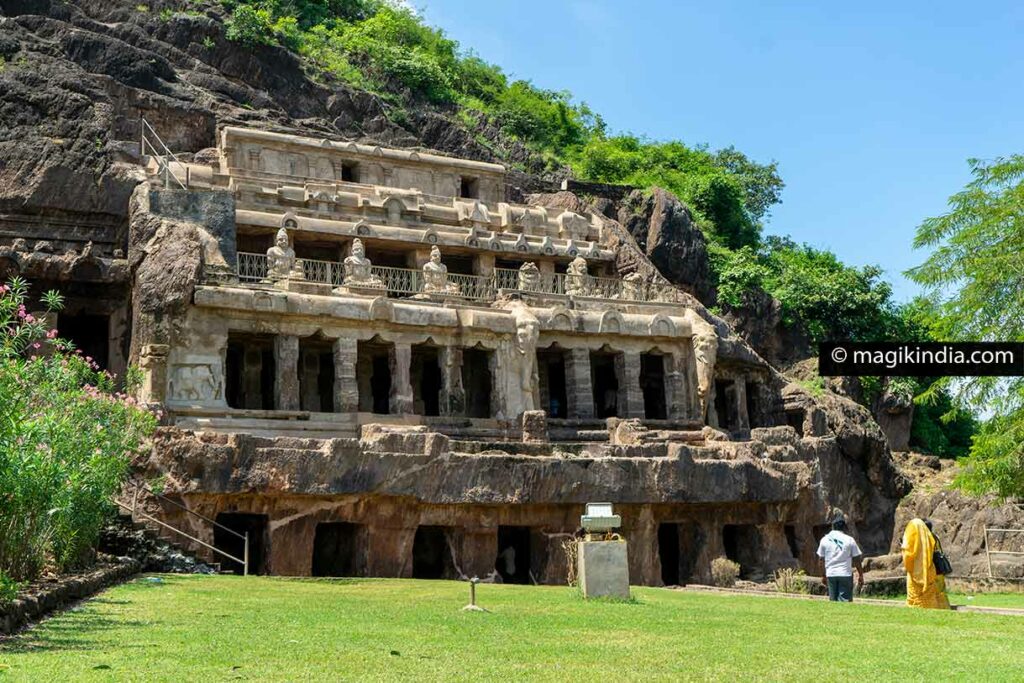
The Undavalli Caves are believed to have been built from the 4th century CE when they served as a Vihara, i.e. a Buddhist monastery. Following the decline of Buddhism in India, which began in the 6th century CE, the site was taken over by Jain monks.
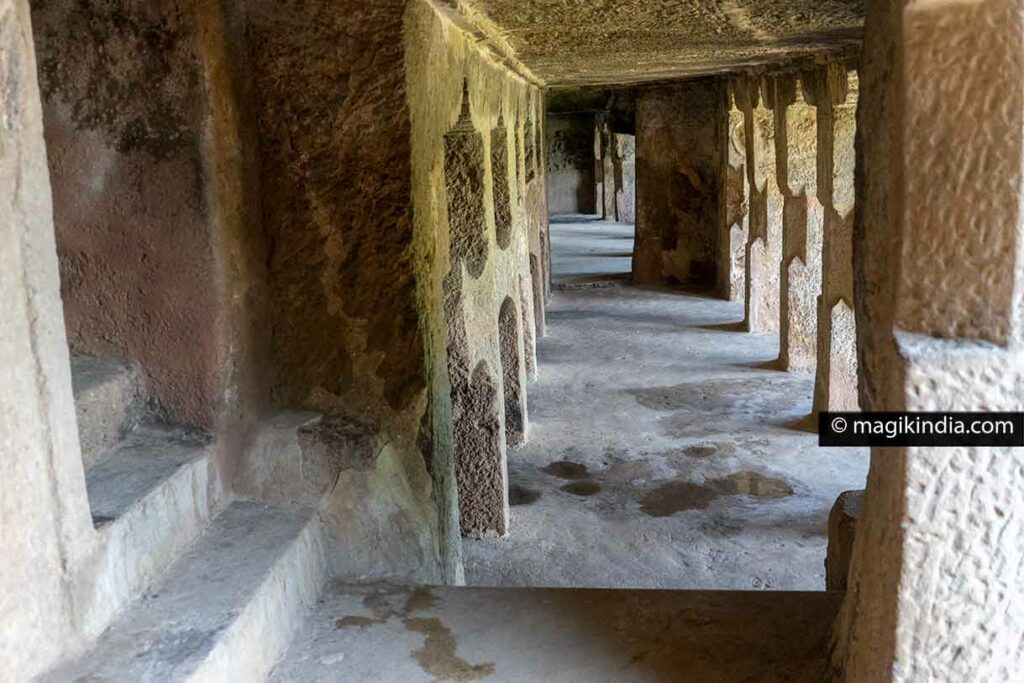
Under the influence of the Vishnukundin rulers (5th-7th century CE) who made Amaravathi and then Vijayawada their capital, Hinduism experienced a revival in the region. Idols of the Hindu pantheon then were carved in the Undavalli caves.
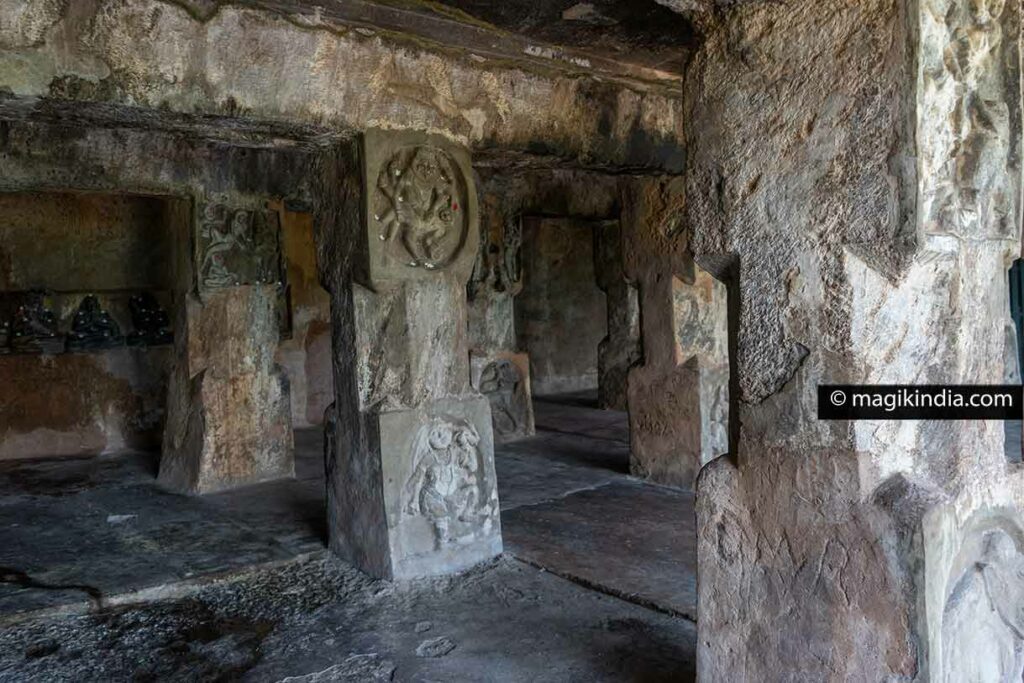
The Undavalli Caves were carved in three levels into the rock face of a hill overlooking the Krishna River.
The first level comprises a single-pillared hall believed to be the vihara with roughly rock-cut cells.
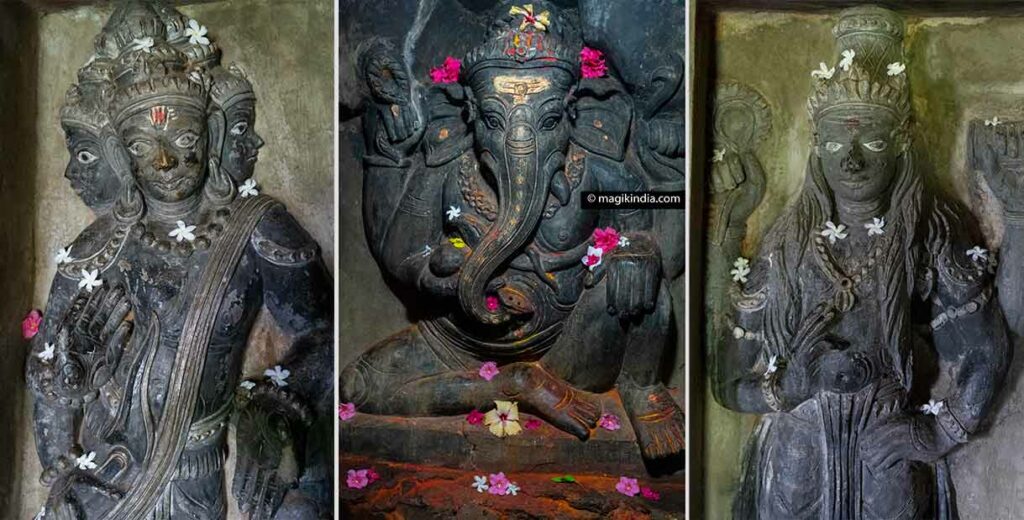
The second level already displays more sophistication, it is mainly dedicated to the god Vishnu accompanied by several representations of the “Trimurti”, the Hindu Trinity: Brahma, Vishnu and Shiva.
In the same room, in an alcove, stands a superb sculpture of Ganesha in the position of “rajalilasana” (the royal seated pose); an imposing and quiet image at the same time.
During my visit, flowers had just been freshly placed on each statue, adding to the charm and beauty of the place.
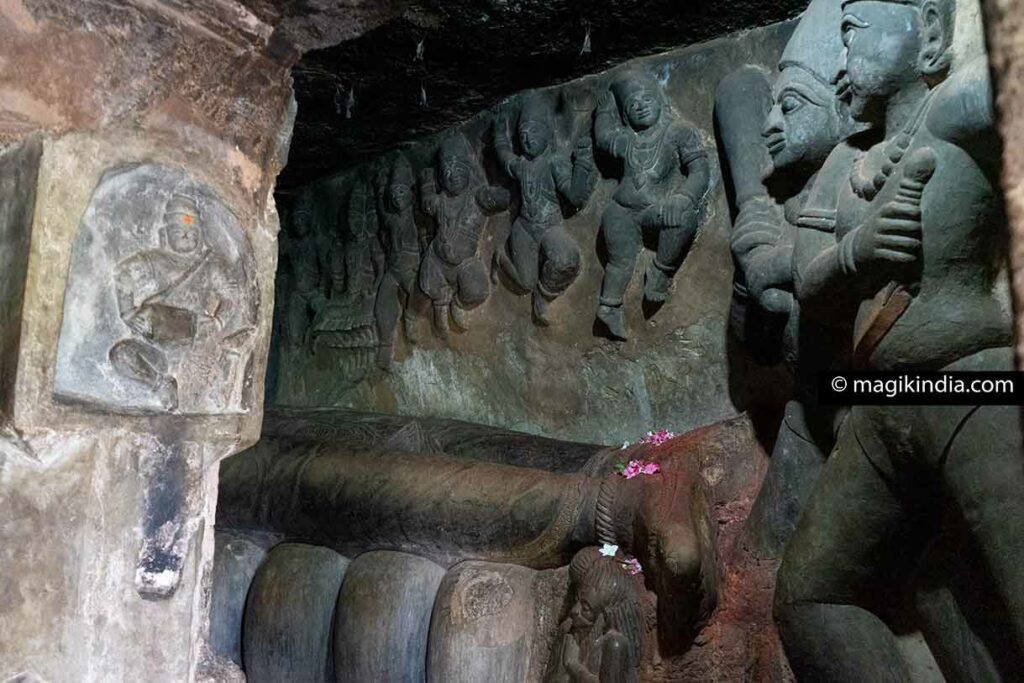
The third level is the most spectacular: in a narrow room, we happily discover a 5-meter-long statue of Vishnu carved from a single block. The protective god of the universe is represented here in his form of “Padmanabha”*, lying on the mythical serpent Sheesha.
*Padmanabha literally means “one who has a lotus coming out of his navel”. The ancient scriptures tell that at the dawn of creation, Lord Vishnu slept on the primordial ocean of Ekarnav. A lotus emerged from the navel of the god, in which Lord Brahma, the creator of our universe, was born.
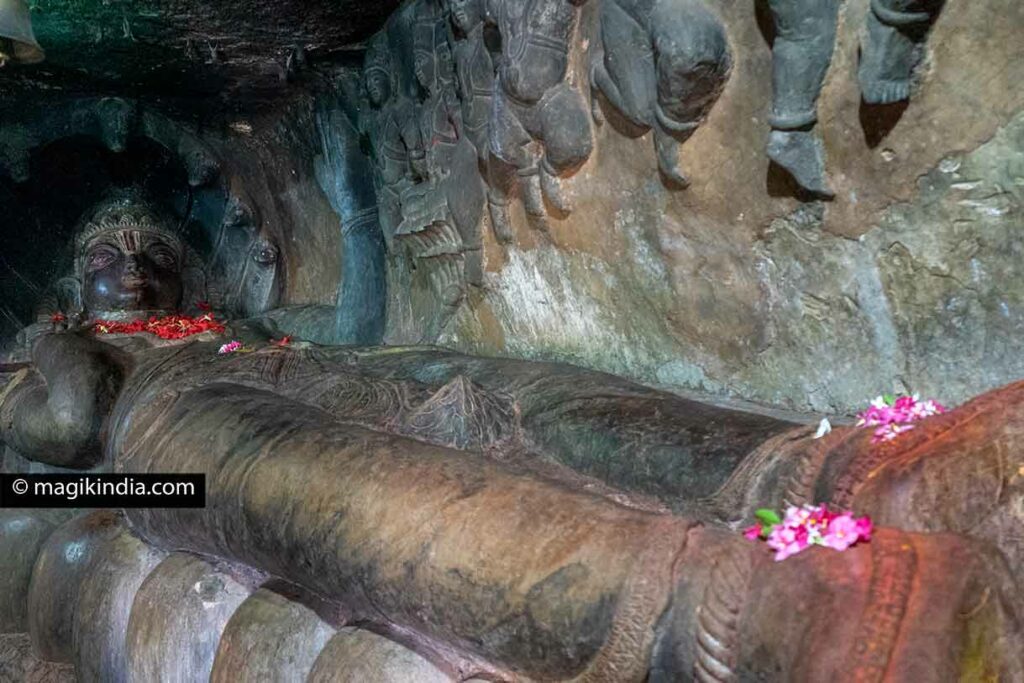
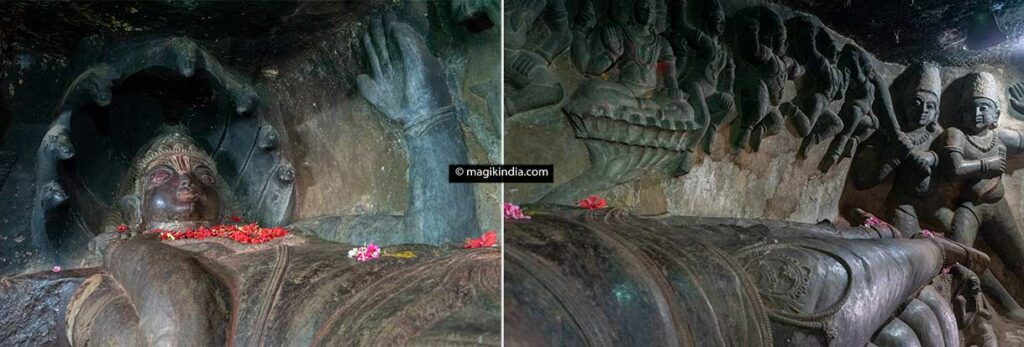
The serene beauty of Vishnu’s face is striking as is that of the two ascetics seated at the foot of the god, completely immersed in Bhakti (devotion). Contrasting with this bliss, two warriors armed with a saber and a club stand at the entrance to the chamber: perhaps guardians or avatars of Vishnu.
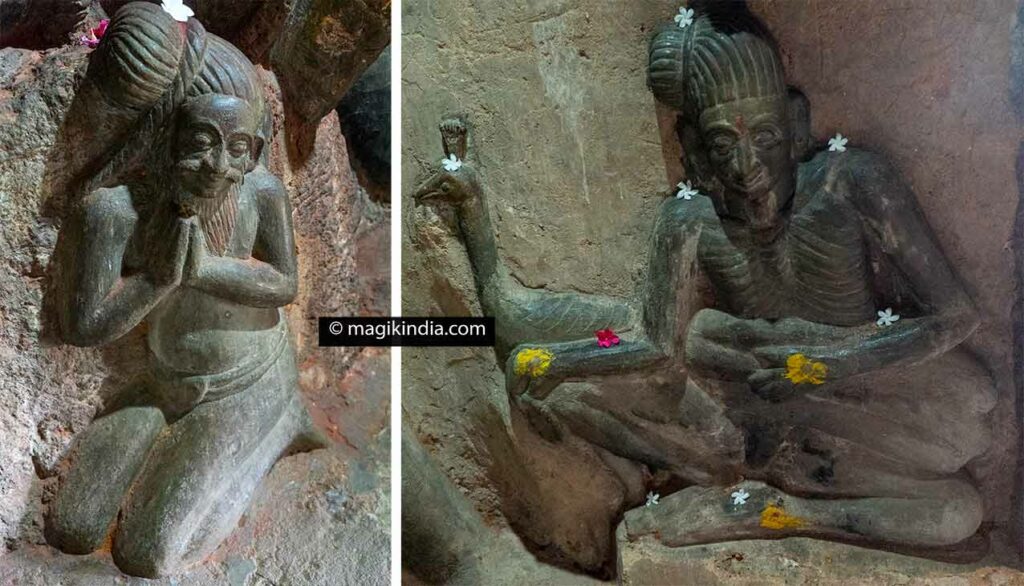
Still on this third level, going out onto the terrace, we find what appear to be Rishis, holy men, seated, meditating. One of them playing the lute is flanked by two lions. The identities of these characters, if any, are unknown at this time.
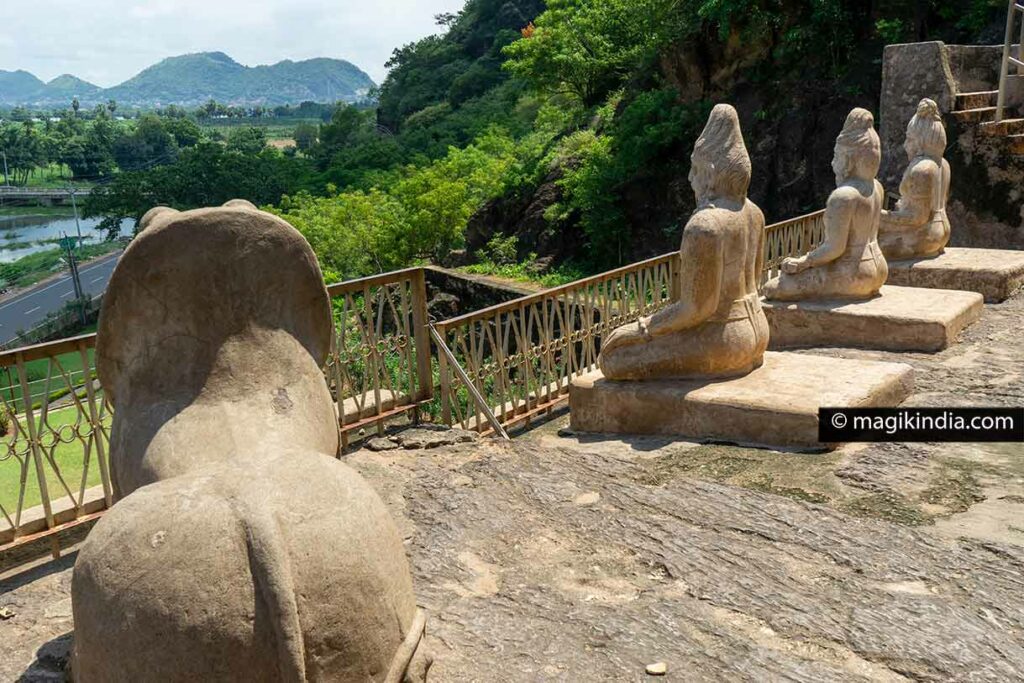
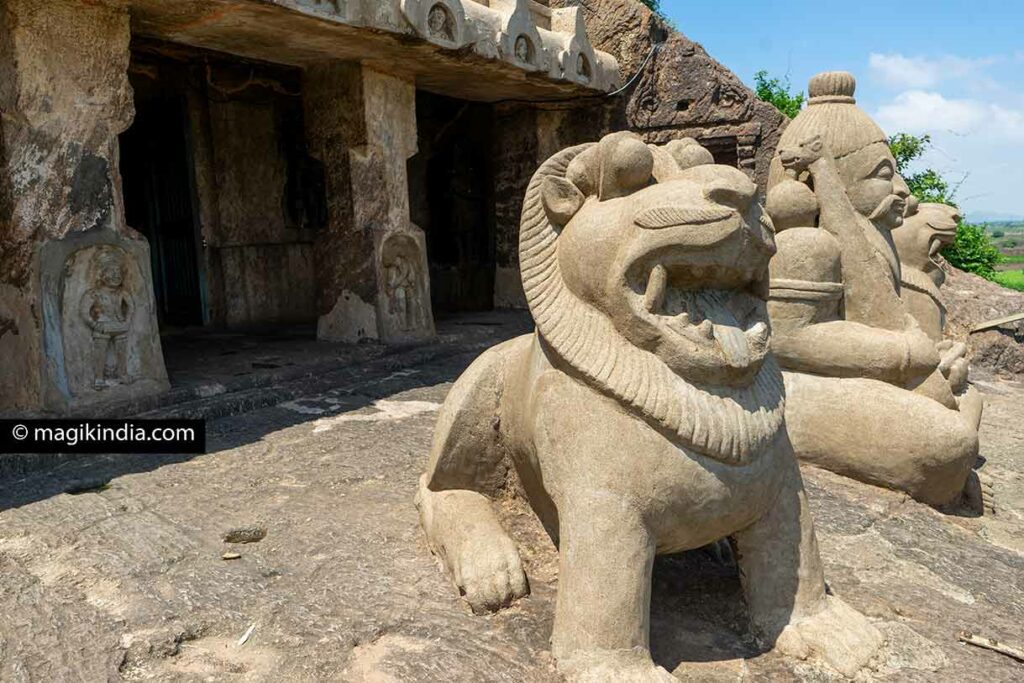
Let’s end this article with a legend: popular belief has it that in this cave there is a 9 kilometer underground passage leading to the sacred mountain of Mangalgiri. Locals believe the entrances have been closed and hidden by authorities to prevent accidents.

